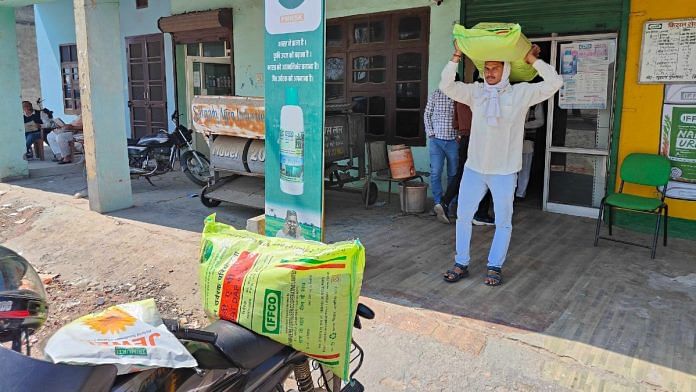Karnal: Balwinder Singh, a 32-year-old wheat farmer in Karnal, Haryana, comes out of the local Pradhan Mantri Kisan Samriddhi Kendra straining under the weight of a 50 kg bag of urea, but with a triumphant look on his face. He is relieved he managed to get his hands on his usual choice of fertiliser without having to additionally purchase bottles of nano urea, a cheaper alternative, being sold at the shop.
“The last time I came here, I was forced to buy nano urea bottles,” he explains as he loads his motorcycle with a second bag of granular urea. “They had said they would not sell the regular urea if we did not also buy the bottles.”
But why not use the cheaper alternative? “I used the bottles of nano urea last year and they had no effect on my wheat crop, and were also more expensive to use. So this time I managed to fight and get the regular urea and refuse the bottles,” he says, a wide grin on his face.
As he gets on his overloaded bike and rides off somewhat unsteadily, other farmers who have come to buy urea recount similar experiences.
“I was told that nano urea would be explosive for my plants, but I saw no change in the output,” says one. “They made me buy five bottles of nano urea instead of bags of urea,” says another.
“It is very expensive to hire labour to spray the nano urea, compared to sprinkling the usual fertiliser,” says another farmer.
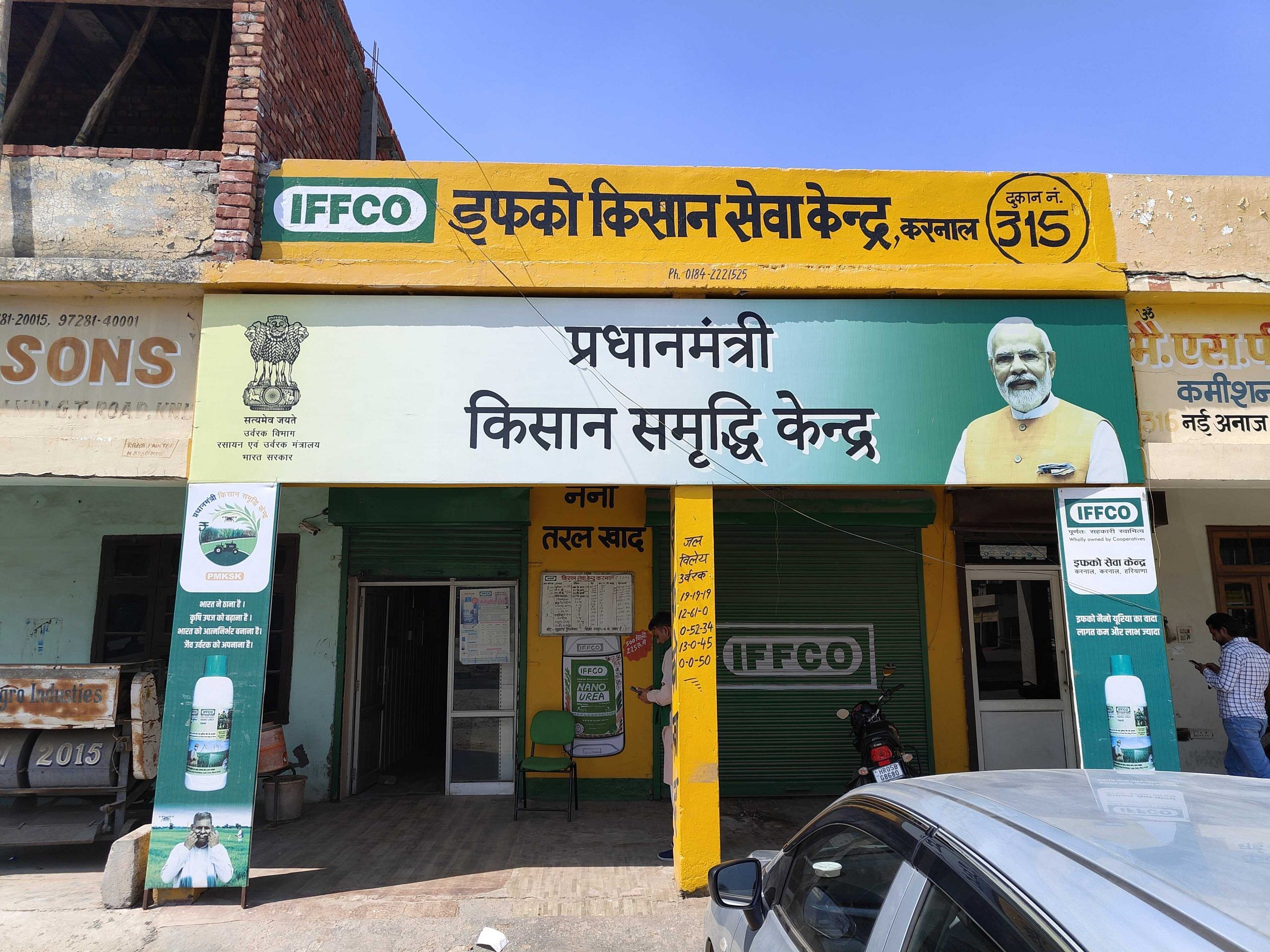
These complaints are not limited to Haryana either. While the Modi government and the Indian Farmers Fertiliser Cooperative (IFFCO) — the main manufacturer of nano urea — have been touting the benefits of nano urea, farmers in Punjab, Gujarat and several other states have complained that they are being forced to buy the bottled urea along with sacks of granular fertiliser.
“We have been receiving calls from farmers all over who are complaining that they are being forced to buy nano urea,” Surendra Sangwan, spokesperson of the Bhartiya Kisan Union in Haryana, tells ThePrint at his office in Karnal. “The IFFCO shopkeepers are saying that if they don’t also purchase the nano urea, they will not sell the regular urea bags.”
“We have taken this up with the state governments as well,” Sangwan adds. “Our main contention is that, if the product is useful, the farmer will buy it even if it is more expensive, but forcing it on them is wrong.”
IFFCO had launched nano urea in 2021, a first-of-its-kind, indigenously developed product. It was promoted as a fertiliser that would radically transform farming in India and across the world by raising productivity, while reducing environmental pollution and input cost.
But at the moment, it looks like farmers are not buying it, even though it’s cheaper. Data provided by the Ministry of Chemicals and Fertilisers in the Lok Sabha showed that just 138.77 lakh bottles of nano urea have been sold in India in the first eight months of this financial year, less than half of what was sold in the 12 months of 2022-23.
Also Read: As farmers march towards Delhi, Congress announces MSP as ‘first guarantee’ for Lok Sabha polls
Increased yield a common misconception among farmers
The problem is largely two-fold — lack of awareness among the farmers, and their practical experience of having to incur much higher labour costs associated with the use of nano urea.
The first issue has to do with the perception of what the main impact of nano urea is. According to IFFCO, nano urea is a “nanotechnology based revolutionary agri-input which provides nitrogen to plants” in the form of a spray.
A 500 ml bottle of nano urea costs Rs 225, compared to Rs 268 for a 50 kg bag of granular urea. They both serve one acre of land.
Union Minister of State for Chemicals and Fertilisers Bhagwanth Khuba had last month informed the Lok Sabha that studies showed that while the proper use of nano urea increased crop yields by 3-8 percent, the real impact was in a urea saving of 20-25 percent.
“The issue with particulate urea is that it is 46 percent nitrogen per quintal,” says an official at IFFCO-operated Pradhan Mantri Kisan Samriddhi Kendra in Karnal, not wanting to be named. “But what happens is that the plant can only absorb 25-30 percent of the nutrients in the fertiliser, and the rest leeches into the ground and the groundwater, which slowly poisons it, or into the air as nitrous oxide.”
Nano urea has a concentration of 4 percent of nitrogen per 500 ml and is absorbed in a much more efficient manner, leading to a negligible amount of nitrogen being lost to the atmosphere.
This doesn’t seem to have been effectively communicated to the farmers, who still hang on to expectations of a significant increase in their crop yield, and are disappointed with the results so far.
“I used it (nano urea) once last year and saw no benefit at all in terms of output,” says Raj Kumar, a sugarcane and wheat farmer with 10 acres of land just outside of Karnal, as he walks around his field.
“Usually we see the leaves becoming greener and bigger just 2-3 days after we use the regular urea,” he explains. “This just didn’t happen with nano urea. And my output of sugarcane was the same as it was the year before.”
This is an all-too-common complaint heard from farmers about nano urea, according to Parveen Kundu, a salesperson at the Pradhan Mantri Kisan Samriddhi Kendra.
“Granular urea has a visible effect on the plants within 4-6 days. Nano urea takes about two days to activate within the plant, and then over the next 17 days it slowly has an impact, delivering just the amount of nutrients the plant needs. But this also means that the almost-overnight greenery that farmers want will not happen,” Kundu explains in between dealing with customers. It is the off season, so the queue of farmers looking to buy fertiliser isn’t long, giving him time to explain.
Kundu says that, in his experience, the demand for nano urea has been only about “50-50” since it was launched in 2021. That is, in the three years since its launch, only about half the farmers have seen any benefit from the use of nano urea.
He also vociferously denies the allegations that nano urea was being thrust upon the farmers despite their resistance.
“For any new product, it takes time for awareness to be built, and all we have been doing is to teach the farmers about nano urea whenever they come to buy granular urea,” he says. “There is no compulsion for them to buy the bottles, but we do try very hard to convince them.”
Also Read: SKM rejects govt proposal to farmers — ‘it’s nothing new, will oppose protest leaders if they agree’
Awareness efforts too small-scale
While Kundu is speaking, four farmers entered the kendra and asked for bags of urea and DAP (Diammonium phosphate, used to speed up seed germination). As they wait, they look at the numerous posters on the shop’s walls, highlighting the benefits of nano urea.
They then turn to a shelf stacked with bottles of nano urea and the newer nano DAP. While one farmer looks like he recognises the product, the other three draw a blank.
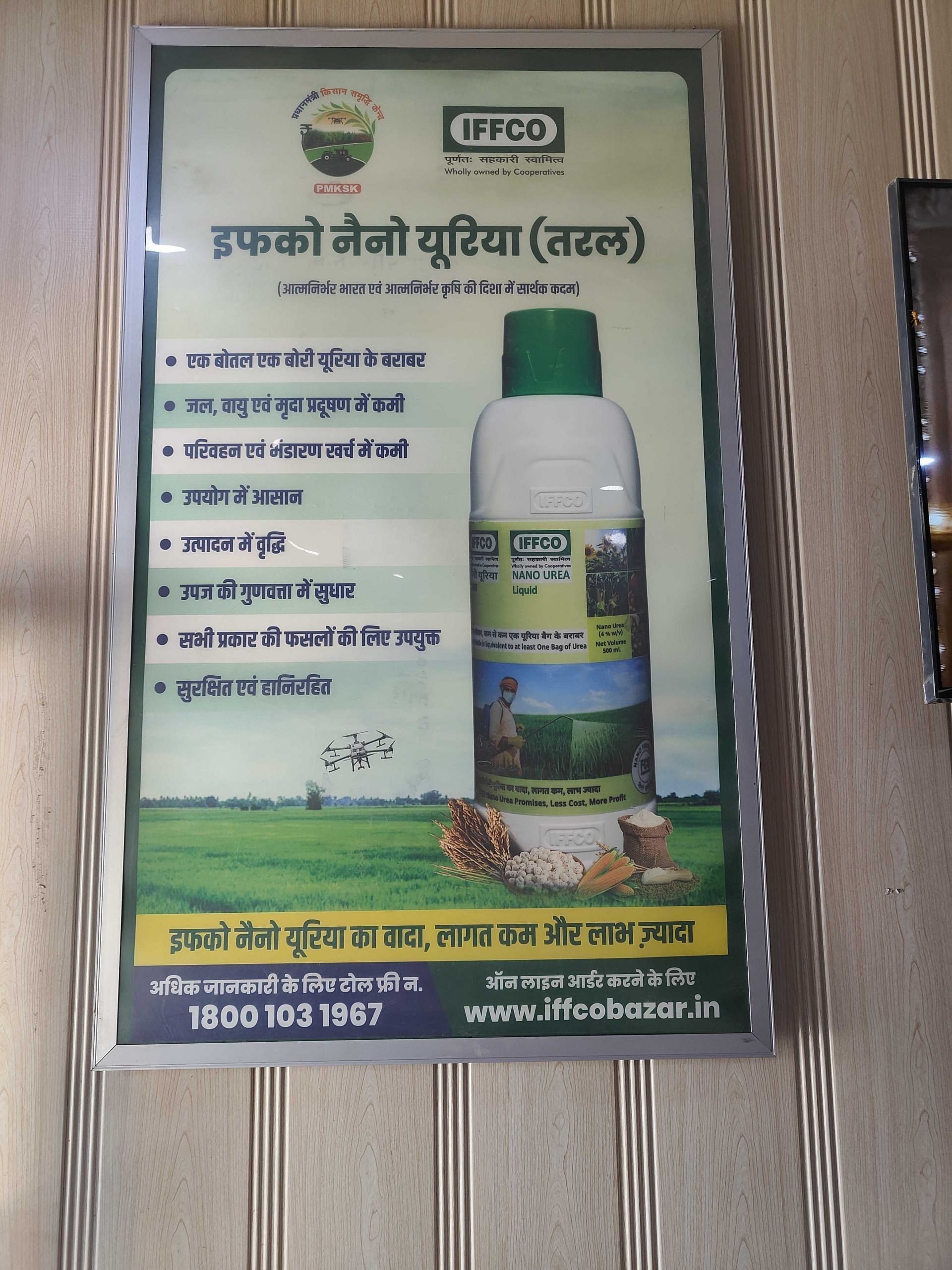
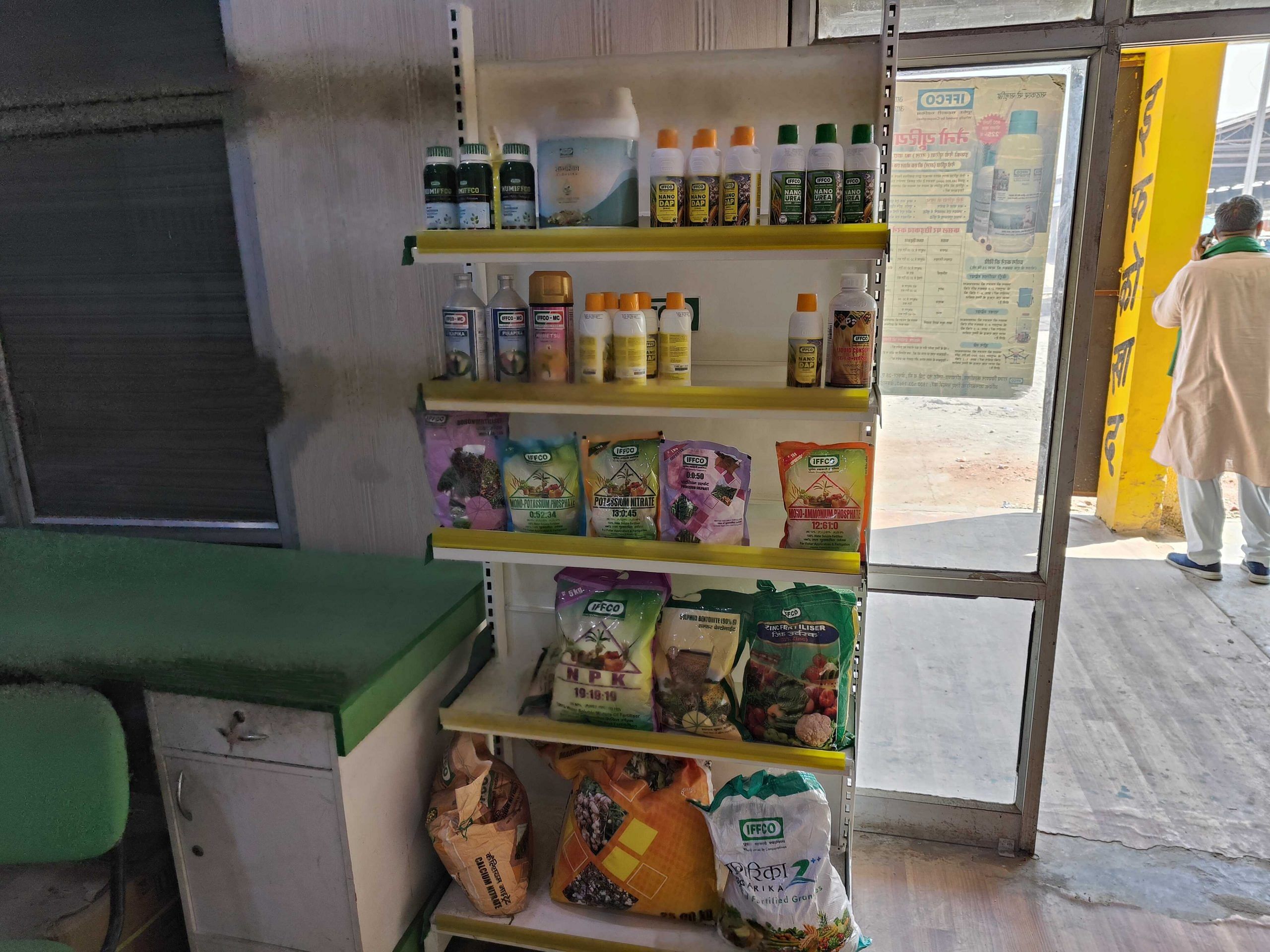
When Kundu returns from the back of the store hauling a bag of urea, the farmers ask him what the bottles contain. Kundu patiently explains. Yet, the farmers leave, unconvinced, with their sacks of granular urea.
“The government has done a number of trials in various locations, on a number of different crops,” says Kundu’s colleague from the IFFCO technical division. “We have been trying to create awareness, but clearly more needs to be done.”
Later in the day, as ThePrint spoke to other farmers, a clearer picture emerged of the government’s awareness campaign.
“Even if they did the trials on the sarpanch’s farm, nobody in general found out about it,” says Isham Singh, a farmer with 13 acres of land, drinking tea in his verandah, keeping a sharp eye on a group of cattle veering ever closer to his field. “They call the people they know for the demonstration, but the wider public doesn’t find out.”
None of the farmers ThePrint spoke to even know about the existence of nano DAP, a new nanotechnology-based fertiliser that has been in development for some time, and was launched by Finance Minister Nirmala Sitharaman in her interim budget speech on 1 February this year.
According to a scientist at the IFFCO head office in Delhi ThePrint spoke to, they are going to introduce nano urea with a concentration of 20 percent per 500 ml instead of the current 4 percent.
“Perhaps this will give the farmers some sort of visible proof of the efficacy of nano urea,” the scientist says.
Nano urea comes with high labour cost
For crops such as wheat and sugarcane, fertiliser is usually applied thrice. The first time is when the plant is still small and its leaves haven’t yet emerged. According to IFFCO, this round of fertiliser should continue in granular form.
It is in the next two rounds — once the leaves have fully emerged — that nano urea should be used because it is absorbed best through leaves, according to IFFCO’s literature on the subject.
The nano urea has to be mixed with water before use, in the ratio of 2-4 ml of nano urea with 1 litre of water. This means that a bottle of nano urea needs about 200-250 litres of water for the spray. Farmers carry this mixture in a tank on their shoulders and spray it on their plants using a spray gun.
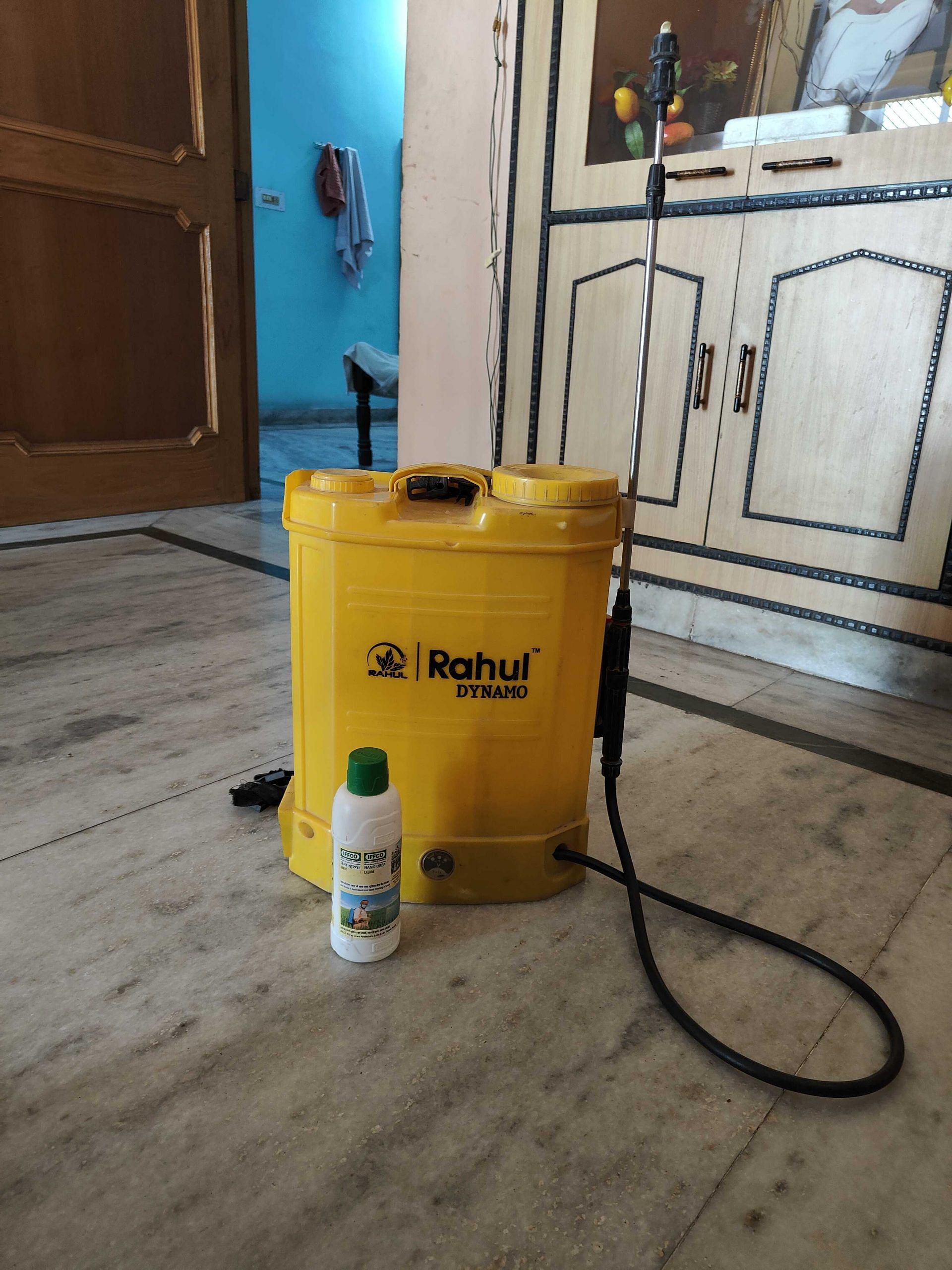
This is where the second main issue with nano urea comes in — the associated high cost and inconvenience arising from its use.
“With normal urea, the labourers charge only about Rs 50-70 per bag to spread it and sometimes we ourselves do it,” says Sunder Singh, another wheat farmer in Karnal. “The same labour charges as much as Rs 180 per bottle for spraying the nano urea.”
With one bag of granular urea and one bottle of nano urea covering the same area — an acre — the increased labour cost associated with nano urea is significant, even though the price of nano urea itself is less than that of granular urea.
“A main complaint does seem to be the labour cost,” IFFCO’s Kundu acknowledges. “The government is trying various things to reduce this labour cost, but of course a subsidy would be the most effective.”
Perhaps a subsidy will work, but, according to noted agriculture economist Ashok Gulati, this subsidy will have to compete against the subsidy on granular urea.
“When I went to Punjab and talked to farmers, they said nano urea is being thrust upon them and that they have to buy it even though they don’t use it,” Gulati tells ThePrint. “The problem with urea is that when you give a 90 percent subsidy on granular urea, why will the farmer use anything else?”
“It is a longer process of creating awareness and implementing this scheme, perhaps a little carrot and a little stick needs to be used. If the technology is really good, then it should take off,” he adds.
(Edited by Gitanjali Das)
Also Read: Why Punjab CM Bhagwant Mann has come under Opposition fire over farmers’ protest


